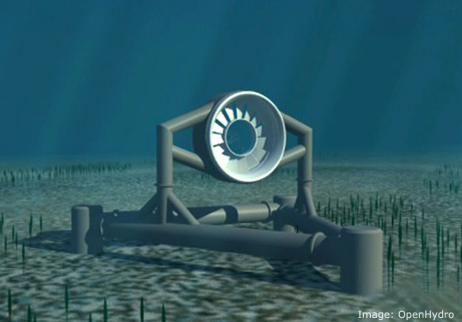The problem with wind power—one of them, anyway—lies in the phrase “fickle as the wind.” Ocean tides, by comparison, are a paragon of reliability. They come and go twice a day, like clockwork. Seasonally, they’re strongest at the solstices in June and December and weakest at the equinoxes in March and September.
That predictability is a big part of the appeal of generating electricity from underwater turbines. Tidal turbines also work out-of-sight, avoiding the sort of conflicts over aesthetics that have tangled up wind farm projects.
I spent a morning recently with researchers who hope to see two donut-shaped turbines lowered into Puget Sound in a pilot program run by the Northwest National Marine Renewable Energy Center, a partnership between the University of Washington and Oregon State University. If the pilot succeeds, a local utility district envisions dozens of turbines lining the sea bed in the future.
Such a full-scale deployment is a long way off, as tidal power is still in its infancy in almost every respect. There are just five or so test sites worldwide, the technology is largely unproven, environmental concerns must be settled, and it receives a minute fraction of the research funding other renewable sources receive.
“I would say that tidal power is in a state where wind was 20 years ago,” said Brian Polagye, a mechanical engineering professor at the University of Washington and a lead researcher of the Puget Sound project. “However, because tidal power leverages much of what we’ve learned from wind power (for the actual devices and drive trains) and offshore oil and gas (for the foundations), I would expect that tidal power will be on a steeper development curb.”
Polagye, geeky in a thoroughly endearing way, spoke with naked enthusiasm about the project out on the water last week during a tour of the test site. His research team faces lots of questions—technological, environmental, and economic. But field tests begun this spring have yielded some encouraging early results. The seafloor current turned out to be several knots faster than earlier estimates, for example.
Because much of this is easier explained with pictures, the rest of the story is in a slideshow:


